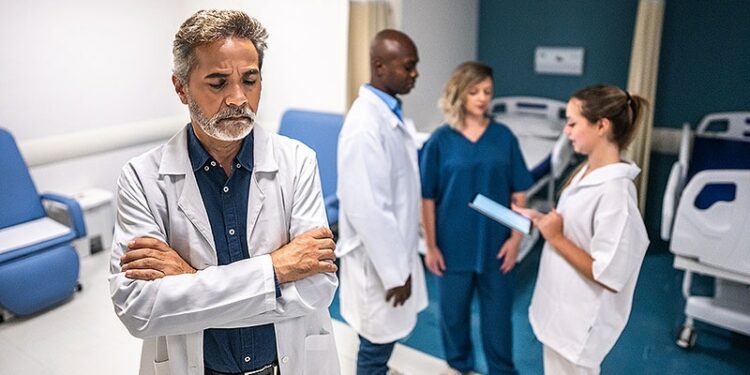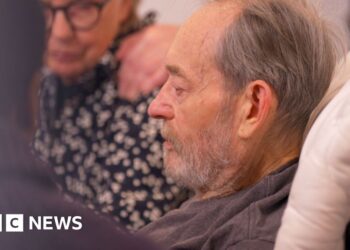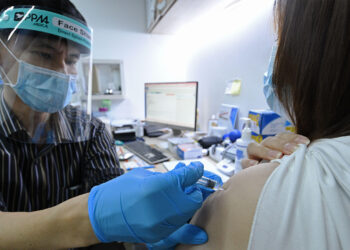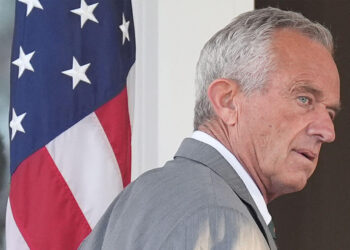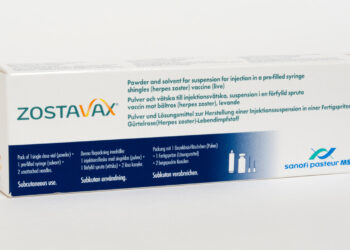“There are so many times when I feel like I’m experiencing Groundhog Day,” says Rachel Southard, DO, a resident physician in obstetrics and gynecology. “Every day is practically the same, and yet the world outside of the hospital is continuing to unfold, and I hardly know anything about it.”

Is the medical world a lonely one? A pre-pandemic Harvard Business Review study said yes, suggesting that doctors were among the loneliest professionals. Certainly, healthcare workers feel increasingly isolated — from the world outside the hospital walls, but also from colleagues and even from patients.
This was only exacerbated by the heightened conditions of the COVID-19 pandemic: More than 80% of respondents to a 2020 Health & Social Care in the Community survey of healthcare workers reported they were prone to mental health issues, and researchers found that the presence of loneliness was positively correlated with these struggles.
“The pandemic was by no means the reason for increased loneliness in the medical field,” says Sabine Schmid, PhD, director of psychology education at the University of Minnesota, “but it was an event that aggravated a lot of the things that already existed.”

The irony of this is that doctors are among the most aware of the major psychological and health impacts that loneliness can have. In 2023, Surgeon General Vivek Murthy called attention to loneliness and isolation as an “epidemic.” He cited its association with increased rates of anxiety, cardiovascular disease, dementia, and stroke, and even its link to a shorter lifespan. A 2017 study found that, in terms of impact on mortality, loneliness is about equivalent to smoking 15 cigarettes a day.
So why are physicians so lonely? How can professionals who are surrounded by colleagues and patients feel isolated? And what can be done to make the healthcare workplace a healthier, more caring place to work?
Lonely Does Not Mean ‘Alone’
The fact that doctors are among the loneliest professionals, despite dealing so vitally with the public, is proof that “lonely” is not synonymous with “alone.”
“Even though I constantly interact with other people, I still feel alone sometimes,” says Harvard Medical School student David Xiang, who wrote a 2023 op-ed about ways to navigate loneliness in medicine. For medical students, feelings of social isolation are associated with dropping out, with many citing a lack of social connection as their reason for leaving a program.

While med students may spend time with peers who understand their struggles, their busy schedules tend to leave little time for genuine connection. “When I started on the pre-med path, I noticed that I had a lot less time for friends due to the rigorous schedule of studying, volunteer work, research, working, and commuting to school,” Southard says. “There were some friends that would stop inviting me to things because I would often decline. Then I did have the few friends who would still invite me to events, knowing that I would decline.”
The demands of med school meant that, even when she was with her friends, her mind was always on the fact that she could be studying. “What I missed most was just being able to relax with friends and being completely carefree,” she says. “Looking back now, I regret not just letting go and being present. If I had to do it over again, I would have said yes more. When people ask me about tips [for] medical school, that’s the main tip I provide: Say yes more to your friends and family, and be present.”
Southard adds that her requirements for a social life are probably different from others’ because she considers herself an introvert. The distinction between being alone and feeling lonely is worth noting, especially when it comes to the experience of introverted healthcare professionals. In a previous Medscape Physician Lifestyle & Happiness Report, only 28% of respondents reported being more extroverted than introverted.
“I’m an introvert,” Schmid says. “I don’t need a lot of social contact. For me, the pandemic did not at all stress my mental health, because social distancing and weekends to myself is what I want. For me, going out in nature was just a great balance to work that had become more stressful.”
Still, the pandemic boosted a kind of loneliness that transcended solitude. The results of a 2020 survey indicated that loneliness among healthcare professionals was not due to being physically alone, but rather to more subjective evaluations of feelings of social isolation. These findings suggest that physicians’ feelings of isolation are due to a lack in quality, not quantity, of interactions in the healthcare workplace.
Increasing Isolation in the Medical Field
A 2022 study found that social isolation has been increasing in the United States since before the pandemic. In general, Americans are experiencing less social engagement and less shared leisure and recreation. The study cites work hours as “a structural constraint to social engagement.” The use of technology has also been cited as a factor in increasing isolation.
The issue of long, demanding work hours that stifle shared leisure time is nearly universal in medicine. But healthcare professionals are also subject to contemporary technologies that create a more efficient — but less connected — workplace.
“I feel like medicine is becoming increasingly siloed,” Xiang says. “We’re missing that natural communication that would happen if we were all in one workroom, delegating tasks to each other. As electronic medical records and technology have advanced, we’re relying less on in-person communication and hand-offs, and more on pagers or sending messages through EMRs. That’s probably a reason we’re not just creating distance between providers themselves, but also between the provider and the patient.”
Harsh Moolani, a fourth-year medical student, started a nonprofit called Create Circles that combats loneliness in older adults by pairing them with student volunteers who help them build a sense of purpose. As for physician loneliness in particular, Moolani believes the traditional healthcare professional persona is a key contributing factor. “Historically, a physician’s role has always been to be this stoic person who doesn’t necessarily feel things,” he says. “Especially for high-achieving people like doctors, it’s easy to acknowledge that loneliness is a problem for others, but hard to admit it for yourself.”

Xiang says he spends most of the day thinking about how he can be there for others. “When my only train of thought was How can I be there for other people?, I started forgetting how I could be there for myself,” he says, emphasizing that connecting with oneself is a necessary step toward forming genuine connections with others.
Southard agrees. “You have to have a full cup in order to pour into another’s cup — that’s healthcare,” she says. “But for so long, you had the healthcare professional with an empty cup, attempting to pour into others’. That’s not how it should be.”
Fostering Connectedness in the Workplace
In 2020, Schmid and the rest of the University of Minnesota Department of Psychiatry & Behavioral Sciences teamed up with the university’s anesthesiology department as part of the Minnesota Rapid Response Program. The program offered psychological support for frontline workers at the individual level, the peer level, and the institutional level for issues like burnout and loneliness. At the leadership or institutional level, mental health consultants led small support group meetings in resiliency training. The peer level followed a peer support system developed by the United States Army called Battle Buddies, where peers would check in with one another on a weekly basis to listen, share, and provide advice. At the highest level for individuals, psychologists and psychiatrists in the department offered free, one-on-one coaching sessions with frontline workers.
Xiang also found institution-led peer support groups to be beneficial in dealing with loneliness. His medical school curriculum included weekly sessions where peers would share their experiences on clinical rotations. “I found that to be a really nurturing space to find commonalities with other people and vent about shared experiences together,” he says.
“At an institutional level, it would be helpful to create more spaces that prioritize provider and staff well-being,” Xiang adds, “whether that’s group sessions during lunch, interspecialty or interdepartmental spaces for connection, snacks and tea, or just time to get to know each other, especially if the department is really big. I think whatever opportunities there are to foster spontaneous connection and discussion that is not just work-focused, but personal life‒focused, would be great.”
Another way healthcare institutions can create the space to help physicians feel less figuratively and physically isolated is through infrastructure. Today, many physicians often work in small, solitary, windowless rooms. “If we were to change the infrastructure and [create] spaces where it’s more conducive to catching up with colleagues and discussing patients together, that would be wonderful and would allow for connection,” Moolani says. “Whenever you’re isolated to smaller nooks and crannies of hospitals, it doesn’t really open up the door for you to talk to others.”
Schmid agrees that, along with resiliency training, optimal office environments are vital for satisfaction in the healthcare workplace. “It would be helpful to protect our employees not just from high stress,” she says, “but [also] to increase their satisfaction and work environment and make it more positive, joyful, and conducive to human contact.”
No matter the infrastructure, individual healthcare workers can contribute to a more connected workplace simply by asking colleagues and patients about who they are outside of the hospital.
Discussing loneliness more openly in the workplace in general — whether at the individual or institutional level — carries the power not just to highlight commonalities, but also to destigmatize expressing these personal feelings and cut through the impenetrable, invulnerable persona of the traditional healthcare professional.
“In a way, it’s kind of ironic how the majority of us experience loneliness in one way or another,” Xiang says. “That in itself becomes a commonality and a shared experience that we can all relate to.”
Source link : https://www.medscape.com/viewarticle/i-feel-alone-why-loneliness-now-common-among-doctors-2025a10001ov?src=rss
Author :
Publish date : 2025-01-23 16:27:41
Copyright for syndicated content belongs to the linked Source.

